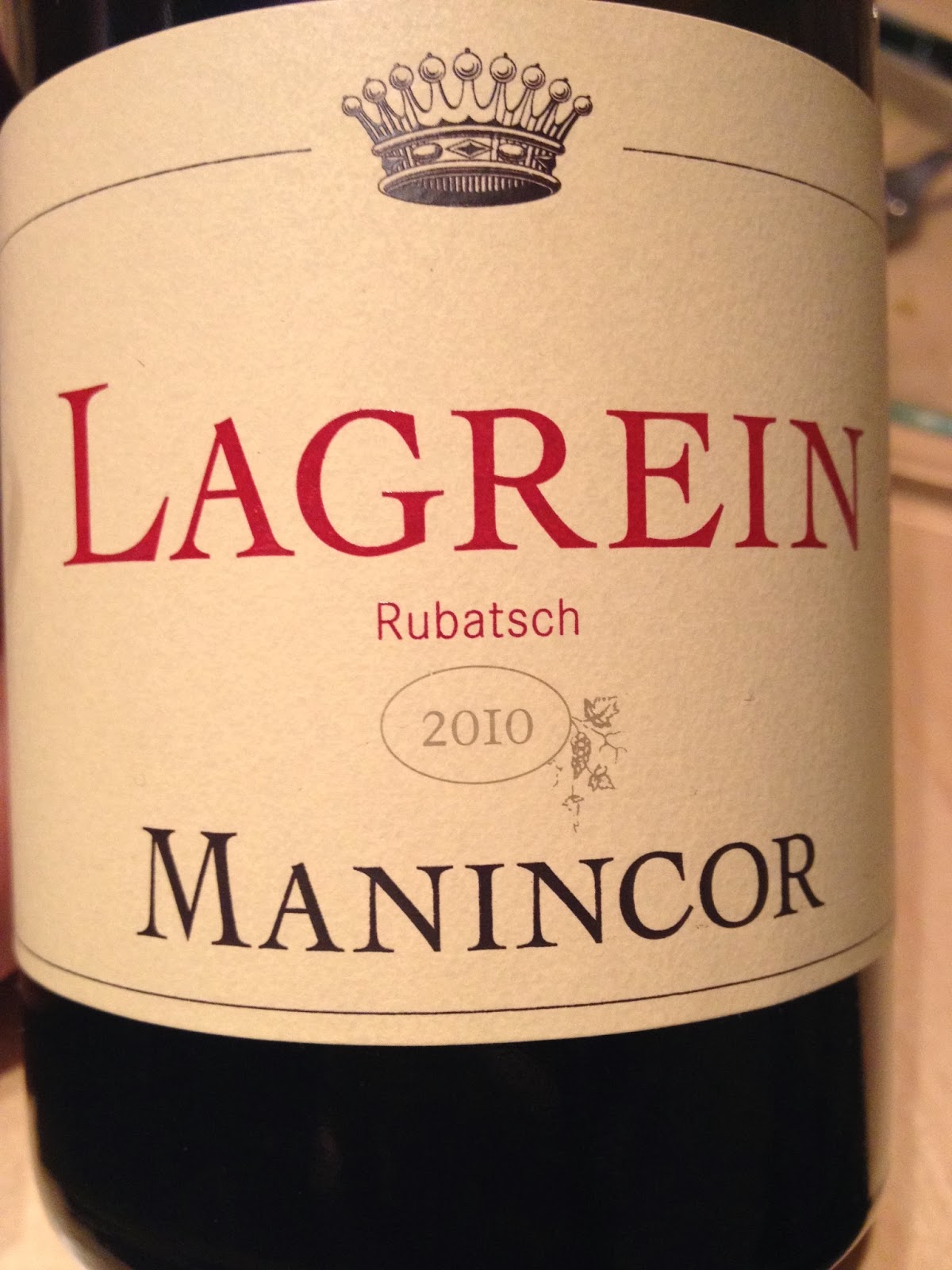Lagrein Rubatsch 2010, Manincor
Noe reduktiv og vanskelig definbar i munnen. Sommerblomster og moderne frisk stil. Øistein var på barbera og Lars I. på pinot noir fra New Zealand. Noe sødme, hul, mangler kompleksitet, safran og en odde vin.
83 poeng.
Lacima 2010 Dominio do Bibei, Ribeira Sacra
Purpur og frisk "naturvin". Nerello Mascalese ? Lett spicy med rips, fyrstikk og svovel. Krydret, litt undermoden og grønn munnfølelse. Pen rødbærsfrukt, noe kjemisk, men en spennende og god vin.
84-86 poeng.
dN.no jan 2014;
11100 Lacima 2010. Dominio do Bibei. Riberia Sacra, Spania. 369 kroner. 93 poeng. Vinarius
Intens, aromatisk duft med nyper, søte bringebær, anis og mynte. Lett krydret på smak med delikat konsentrasjon av leskende syrlig bærfrukt med en mineralsk stram avslutning som sitter lenge. Drikk nå til 2020. Passer til kalv, svin og and.
Rioja Gran Reserva Imperial 2004, Cune
Mørk purpur, salt roquefort. Øistein var rett på Spania. Vi gikk deretter mot Garnacha/Priorat. God tørrhet, tydelig eik/vanilje, men en god friskhet "redder" den. Wine of the Year i Wine Spectator 2013. God jordsmonnsfølelse. 86-88 poeng.
Wine Spectator 95 poeng:
Over the past 20 years, Spain has experienced a dramatic upheaval in its deeply rooted wine industry. The epicenter of this revolution in style and character has been the country's most prestigious wine region, Rioja.
Beginning in the 1990s, a vigorous debate pitted traditionalist bodegas against a new wave of vintners. Should Rioja maintain the supple, elegant style that had flourished since the early 20th century? Or adopt a richer, more structured approach more in harmony with the world's other great reds?
Though the polemics have been fierce, a few producers have found a middle ground that is rooted in history yet open to innovation. Among them, the benchmark bottling, for its pedigree and consistency, may be the Cune Imperial. "I feel Imperial falls in the middle of the traditional/modern divide," says Cune CEO Victor Urrutia, a member of the family that has owned Cune for five generations.
Cune (an acronym for Compañía Vinícola del Norte de España) was founded by brothers Eusebio and Raimundo Real de Asúa in 1879. Now one of Rioja's most important wineries, Cune was among the 19th century producers that helped define classic Rioja, growing several grape varieties (predominantly Tempranillo), fermenting and blending the wines in large wooden or concrete vats, and then maturing them in barrel for many years before release.
Cune was one of the first bodegas to bottle and export its wines, and one of its earliest labels, which gained renown in the 1920s, was called Imperial. It was intended for the English market, and bottled as an "Imperial pint," about 500ml.(There are actually two Imperial bottlings—Reserva and Gran Reserva. In general, Gran Reserva is made with fruit from older vines and spends extra time in barrel.)
The grapes for the wine have always come primarily from a 50-acre parcel in Villalba in Rioja Alta. Yet, Imperial has evolved. The vineyards, once traditionally head-pruned, are now trained in rows on wires, as in Bordeaux. The percentage of Tempranillo in the blend has increased, from around 75 percent to 85 percent, while the white grape Viura has been abandoned as a component. Through most of the 1900s, all the barrels were made of American oak, and maturation extended 10 or 12 years. Today, about 30 percent of the barrels are French oak, and the wine is bottled after about three years. The wines are fermented with native yeasts.
The wine itself has maintained a consistent character. Imperial is rarely aggressive or musclebound, but it doesn't lack structure or grip. New oak never protrudes, nor the oxidation that can result from excessive barrel aging. There is ripe fruit, but it is framed by spice and mineral notes. The wine never seems too young or too old.
"I think Rioja reaches full maturity much quicker than Bordeaux," observes Urrutia, "but has the virtue of staying on its plateau for a very long time." The 2004 Gran Reserva, aged in bottle at the winery, was released in the U.S. market in 2013 and, at $63, it is a remarkable value.
For its ability to balance past and future in such delicious harmony, the Cune Imperial Rioja Gran Reserva 2004 is Wine Spectator's 2013 Wine of the Year.
Tasting Note: Firm and a bit austere, this red shows depth and drive, with chewy tannins supporting plum, tobacco, licorice and mineral flavors. The structure is solid but the wine remains fresh. Maturing now, this has a long life ahead. Drink now through 2024. –Thomas Matthews
Chinon Vielles Vignes 2005, Philippe Alliet
Sigar, eik, brettomyces. De fleste var i Bordeaux, Kim mente Cabernet Franc. Mørk, tørr, saltvann med noe grønt typisk CF. God mineralitet. Vanskelig munnfølelse. 86-88 poeng.




Ingen kommentarer:
Legg inn en kommentar